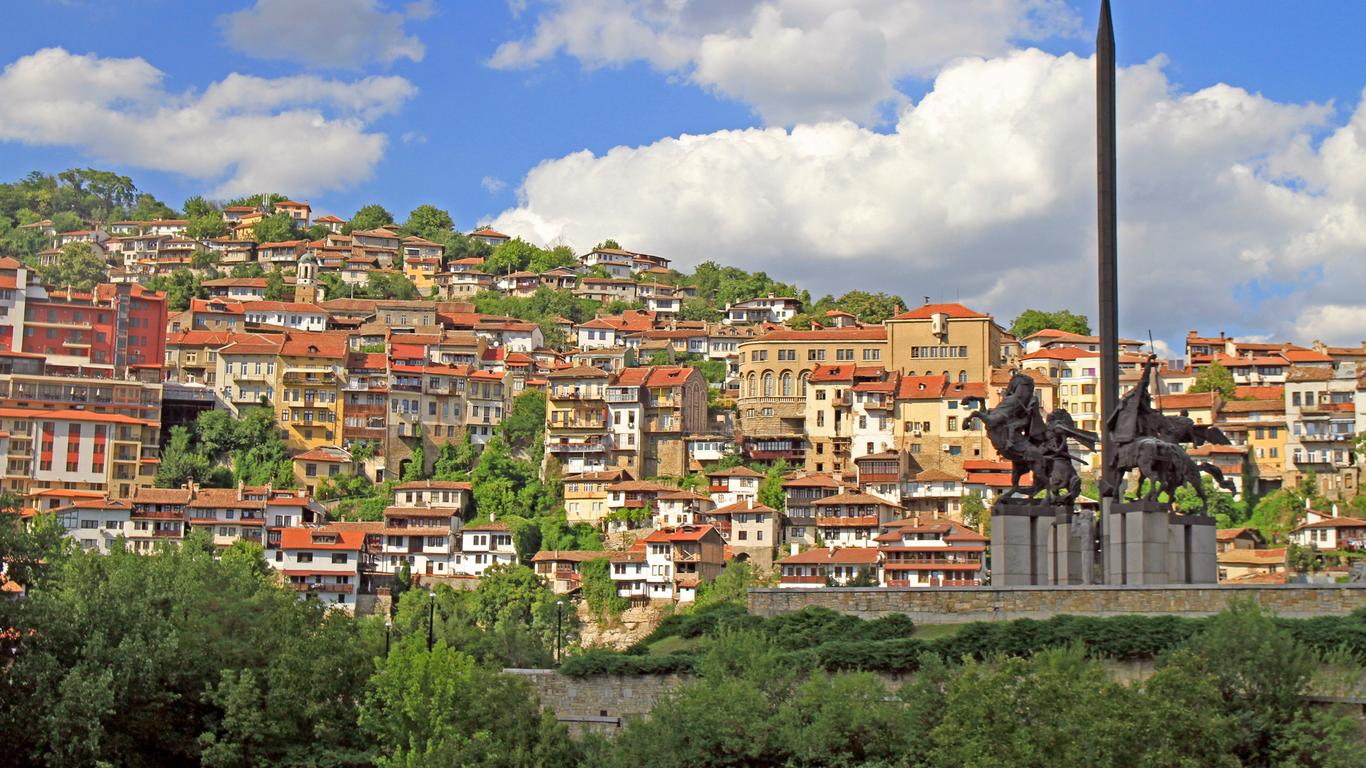Nicknamed the “City of the Tsars”, Veliko Tarnovo sprawls along the Yantra River in the central north of Bulgaria. It served as the historical capital of the Second Bulgarian Empire and is renowned for its distinctive Tarnovo-style architecture which influenced construction across Southeastern and Central Europe.
Tarnovo lies across three hills, including Tsarevets, Trapezitsa and Sveta Gora, with the medieval fortress of Tsarevets the city’s most celebrated landmark. It includes palaces belonging to former Bulgarian emperors, the house of the Patriarchate and the Patriarchal Cathedral, with residential dwellings clustered around. Of Veliko Tarnovo’s many Orthodox churches, Holy Forty Martyrs is one of its most iconic, built in honour of Tsar Ivan Asen II’s triumph over Theodore Komnenos Doukas, ruler of Epirus and Thessaly, during the early 13th century. Not only is the Tsar buried here, alongside members of the Bulgarian royal family and aristocracy, but it contains important epigraphic monuments such as the Omurtag Column. The Archaeological Museum showcases the history of Veliko Tarnovo through Neolithic pottery remains, Chalcolithic Age gold treasure and Bronze Age tools, while the Han Hadji Nikoli Museum Art Gallery exhibits both local and international artists within a beautifully restored building. It’s situated within the Samovodska Charshia ethnographic complex whose narrow cobblestone streets were once the town’s commercial hub. Renaissance-style buildings with high stone walls and small workshops line the streets, together with traditional Bulgarian restaurants and an arts and crafts market. The Emilyan Stanev House Museum is also located here, honouring this much-loved Bulgarian writer on the site where he was born.
Veliko Tarnovo is connected to destinations across Bulgaria by both bus and rail, with its Central Railway Station situated to the south of the city centre. Buses are the most convenient means of getting around the city, and many of its historic areas are easily explored on foot.
Evidence of human habitation has been found on Trapezista Hill dating to the 3rd millennium BC, but it was during the Middle Ages that its fortified settlement flourished into an important political, economic and cultural centre. In 1393, the Ottoman Empire captured the city and later conquered the entire Bulgarian Empire, and the city remained under Ottoman rule until the 19th century.





